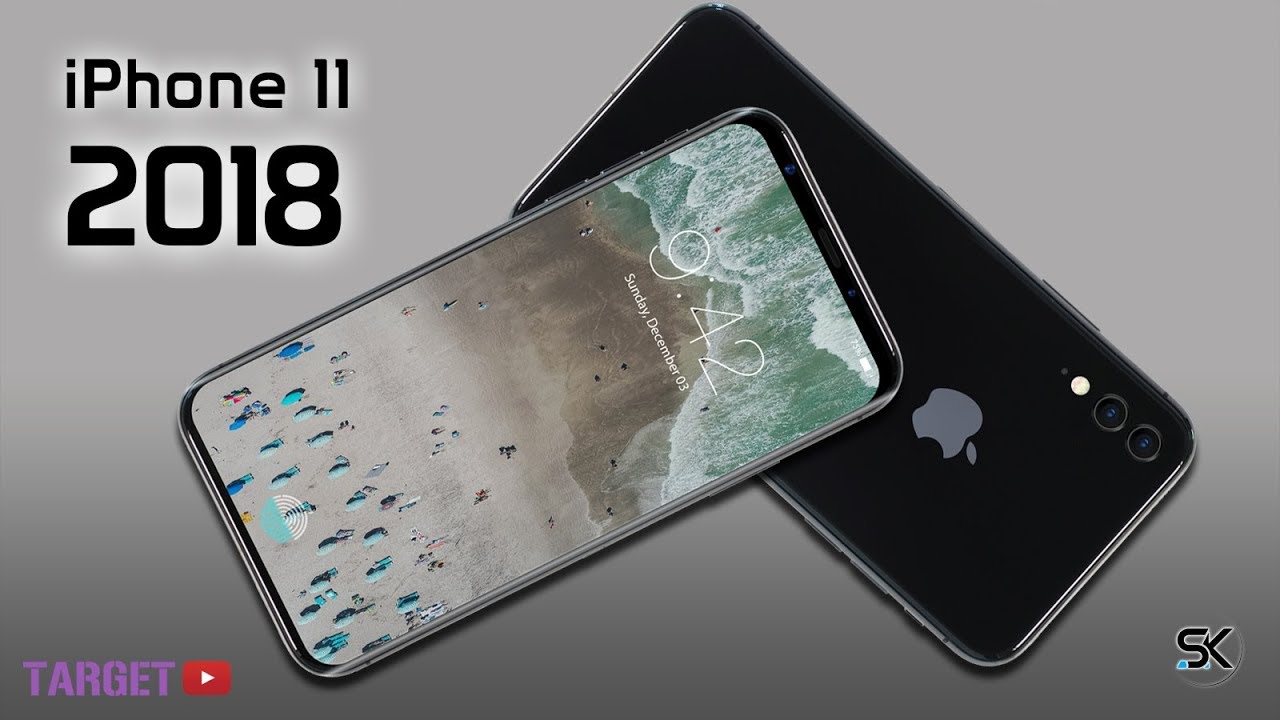iPhone 11 Will Ditch The Display Notch, Claims Report
Apple Inc. (NASDAQ:AAPL) is still the trend-setter in the smartphone industry. Since it unveiled the iPhone X, dozens of Android OEMs have launched phones with an iPhone X-like display notch. Even Huawei’s upcoming flagship P20 is rumored to have a top notch.
But, Apple knows that most of its customers did not like the display notch. So, the company is working to completely remove the cutout from its 2019 iPhone 11 (or whatever it’s called) models.
The display notch on the iPhone X was a design compromise. Apple wanted to build a bezel-less smartphone, but it couldn’t figure out how to hide the front camera, dot projector, infra-red sensor, speaker, microphone, ambient light sensor, and the proximity sensor.
The company shrunk their sizes and accommodated them in the smallest area possible at the time. The display notch was necessary until Apple figured out how to place all the sensors and components behind the display.
Supply chain sources told the Korean site ETNews that Apple was exploring different ways to implement the TrueDepth camera system and other sensors with a truly full-screen smartphone. The company will reportedly introduce the new design with iPhone 11 next year. Apple is “discussing related parts and technology” with suppliers, said ETNews. The publication did not mention the screen size and resolution of 2019 models as talks with display suppliers are still in early stages.
It’s unclear how Apple will place the TrueDepth camera sensors, front camera, speaker, and other sensors while implementing the full-screen design. ETNews speculates that the company could drill tiny holes into the OLED display or use Black Matrix area within the display for such components. Apple’s rival Samsung recently patented a technology to create small holes in the display for the camera and other sensors to offer a full-screen display. The holes won’t affect user experience.
Apple owns the patent for a technology that allows sensor emitters to pass between the pixels of a screen via nearly invisible pores. The pores are unlikely to affect the user experience. It means the sensors could be placed under the display panel while the earpiece and front camera could be housed in the top bezel. If Apple implements this technology, the iPhone 11 would have slightly thicker bezels but absolutely no notch.
Is This Just Another iPhone 11 Rumor?
It’s worth pointing out that ETNews has a mixed track-record when it comes to smartphone industry leaks. And Apple is unlikely to confirm its plans until it launches the iPhone 11 (under the same or another name). In January, ETNews reported that Apple would reduce the thickness of the notch on 2019 iPhones. Now it’s saying the notch will completely disappear from the next year’s iPhones.
The publication noted in January that Apple was working with LG Innotek to shrink bezels on the future iPhones by combining the Face ID camera setup with the regular selfie camera.
Apple remains committed to the notch, at least for now. Last month, the company updated its developer page to inform developers that all new iOS apps must support the notch from April. However, the tech giant did not specify a deadline for when the existing apps in the App Store must support the iPhone X notch. Updating the existing apps is more important than requiring new apps to have native support for the iPhone X design.
Apple has its reasons to enforce this rule on developers. It is going to launch three new iPhones later this year, and all of them will have an iPhone X-like notch, says KGI Securities analyst Ming-Chi Kuo. One of them – likely to be called iPhone XS or iPhone X2 – will have the same 5.8-inch OLED display as the iPhone X. The second device would sport a larger 6.5-inch OLED screen while the third one would feature a 6.1-inch LCD panel.
All three of them will launch with the Face ID technology, claims Kuo. Since the LCD version would be priced in the same range as the iPhone 8, Apple is said to remove the 3D Touch functionality from the device to keep costs down. The LCD variant would feature 3GB RAM while the OLED models would come with a higher 4GB RAM. The 6.1-inch LCD iPhone is also rumored to have only a single camera lens on the back.
Bottom Line on Apple and iPhone 11
Despite its revolutionary design, the iPhone X sales have failed to meet Wall Street expectations. The anniversary iPhone’s sales have gone down dramatically in the current quarter, especially in countries like China, India, and Indonesia.
Samsung, the sole supplier of OLED panels for the iPhone X, has reduced the OLED production capacity in response to lower demand for the most expensive iPhone. Piper Jaffray analysts found in a recent survey that existing iPhone users are reluctant to upgrade to the iPhone X because it’s too expensive and the fact that they are happy with their current iPhones.










